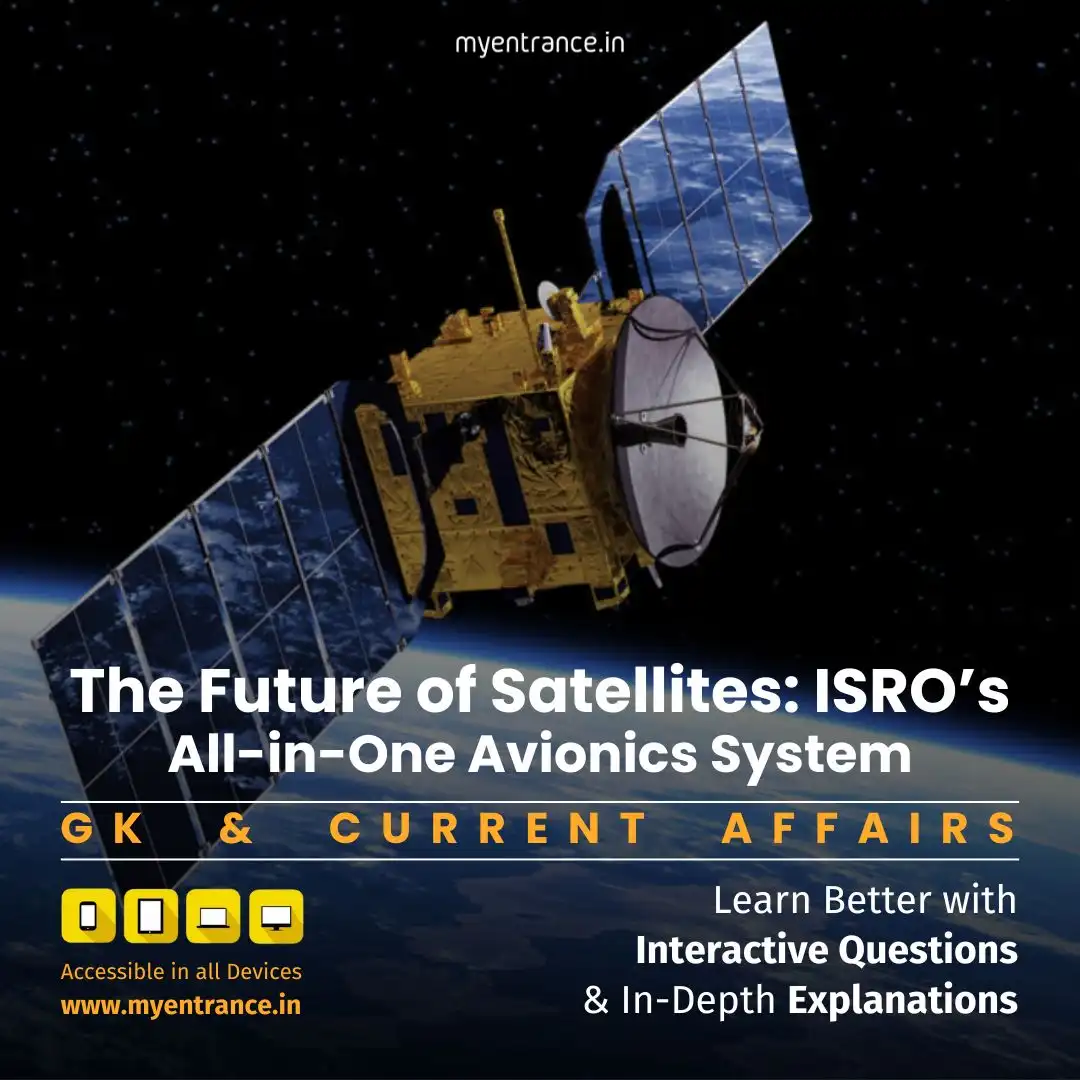Select Language
ISRO’s Next-Gen Satellite Brain: A Game-Changer in Space Technology
The Indian Space Research Organisation (ISRO) is revolutionizing satellite technology with its new Integrated Avionics Package (IAP), a compact system designed to streamline satellite functions. This innovation is crucial for competitive exams like SSC, PSC, NID, NIFT, and FDDI, where current affairs on space technology are frequently tested.

ISRO’s Integrated Avionics Package (IAP): A Detailed Look
Scientists at ISRO’s UR Rao Satellite Centre (URSC) in Bengaluru are working on a groundbreaking all-in-one avionics system that consolidates multiple satellite functions into a single unit. Dubbed the Integrated Avionics Package (IAP), this system acts as the “brain” of the satellite, handling crucial operations like:
Telemetry & communication
On-board data processing
Positioning & navigation
Power management
Key Benefits of the IAP System
Reduces weight and size by replacing multiple discrete units with a single module.
Lowers power consumption, enhancing satellite efficiency.
Simplifies integration, making mass production easier for future missions.
Supports I-1K class spacecraft, ensuring compatibility with various satellite platforms.
Collaboration with Industry Partners
ISRO is seeking industry partners to assist in:
Developing and integrating the IAP system.
Conducting rigorous testing for ground validation.
Ensuring scalability for mass production over the next five years.
India’s Growing Satellite Fleet
As of December 2024, India operates:
22 satellites in Low Earth Orbit (LEO)
31 satellites in Geosynchronous Orbit (GEO)
Active deep-space missions like Chandrayaan-2 orbiter and Aditya L-1
With 261 successful launches in 2024 alone (97% success rate), ISRO’s advancements in satellite technology are setting new benchmarks globally.
Sample Questions & Answers for Competitive Exams
Q1: What is the purpose of ISRO’s Integrated Avionics Package (IAP)?
A: The IAP is a unified system that combines multiple satellite functions (telemetry, communication, data handling) into a single module to reduce weight, power use, and complexity.
Q2: Where is the IAP being developed?
A: At ISRO’s UR Rao Satellite Centre (URSC) in Bengaluru.
Q3: How does the IAP benefit satellite efficiency?
A: It reduces weight, power consumption, and simplifies integration, making satellites more efficient.
Q4: What class of spacecraft is the IAP designed for?
A: It supports I-1K class spacecraft.
Q5: How many satellites does India currently operate in LEO and GEO?
A: 22 in LEO and 31 in GEO (as of December 2024).
Most Predicted Questions
Comprehensive study materials, Expert-guided tips & tricks, Mock tests and instant results.
Start your SSC, NIFT, NID, FDDI, PSC journey today with MyEntrance, your ultimate online coaching platform.















